Filter by
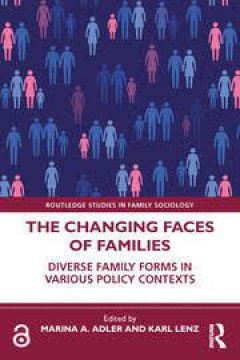
The Changing Faces of Families Diverse Family Forms in Various Policy Contexts
With a focus on nine different national contexts, this book explores contemporary family diversity. With attention to the different welfare states and cultures of care in each setting, it problematizes the pre-eminence of research and policy centered on heteronormative families, showing the extent to which family diversity exists cross-nationally in relation to different gendered and ""family-f…
- Edition
- -
- ISBN/ISSN
- 9781000901498
- Collation
- -
- Series Title
- -
- Call Number
- -

Agreement Beyond Phi
An argument that agreement and agreementless languages are unified under an expanded view of grammatical features including both phi-features and certain discourse configurational features. Much attention in theoretical linguistics in the generative and Minimalist traditions is concerned with issues directly or indirectly related to movement. The EPP (extended projection principle), introduced …
- Edition
- -
- ISBN/ISSN
- 9780262035880
- Collation
- -
- Series Title
- -
- Call Number
- 400 MIY a
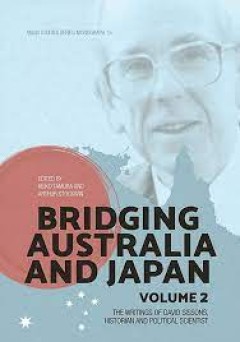
Bridging Australia and Japan Volume 2 The writings of David Sissons, histori…
This book is volume two of the writings of David Sissons, who first established his academic career as a political scientist specialising in Japanese politics, and later shifted his focus to the history of Australia–Japan relations. In this volume, we reproduce his writings on Japanese politics, the Pacific War and Australian war crimes trials after the war. He was a pioneer in these fields, …
- Edition
- -
- ISBN/ISSN
- -
- Collation
- -
- Series Title
- -
- Call Number
- -
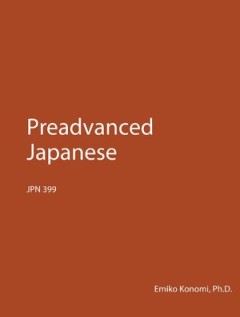
Preadvanced Japanese
Preadvanced Japanese is designed for students who have intermediate competency in Japanese, roughly at Level 2 on the ILR (The Interagency Language Roundtable) proficiency scale, and are working on reaching Level 3.This textbook can be used for self-study, as part of online course, and in a traditional classroom setting. It is comprised of four chapters, intended to be covered in one term of a …
- Edition
- -
- ISBN/ISSN
- 9781312554504
- Collation
- -
- Series Title
- -
- Call Number
- 400 KON p
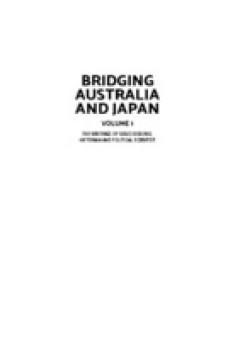
Bridging Australia and Japan: Volume 1. The writings of David Sissons, histor…
This book represents volume one of the writings of David Sissons, who for most of his career pioneered research on the history of relations between Australia and Japan. Much of what he wrote remained unpublished at the time of his death in 2006, and so the editors have included a selection of his hitherto unpublished work along with some of his published writings. Breaking Japanese Diplomatic C…
- Edition
- -
- ISBN/ISSN
- 9781760460860
- Collation
- -
- Series Title
- -
- Call Number
- -
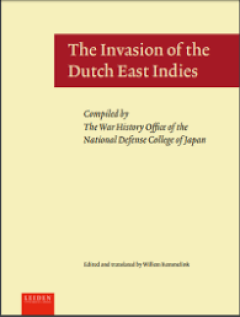
The invasion of the Dutch East Indies
Between 1966 and 1980, the War History Office of the National Defense College of Japan published the 102-volume Senshi Sōsho (War History Series). These volumes give a detailed account of the operations of the Imperial Japanese Army and the Imperial Japanese Navy during the Second World War. This book, vol. 3 of the series, describes in depth the campaign to gain control over the Indonesian ar…
- Edition
- -
- ISBN/ISSN
- 9789400602298
- Collation
- -
- Series Title
- -
- Call Number
- -
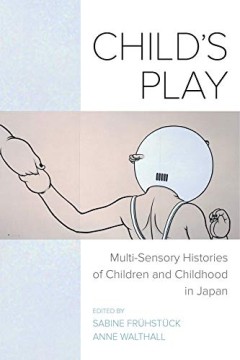
Child’s Play : Multi-Sensory Histories of Children and Childhood in Japan
Few things make Japanese adults feel quite as anxious today as the phenomenon called the “child crisis.” Various media teem with intense debates about bullying in schools, child poverty, child suicides, violent crimes committed by children, the rise of socially withdrawn youngsters, and forceful moves by the government to introduce a more conservative educational curriculum. These issues ha…
- Edition
- -
- ISBN/ISSN
- 9780520296275
- Collation
- -
- Series Title
- -
- Call Number
- 372 CHI
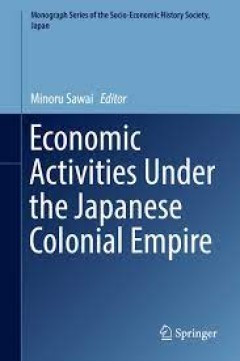
Economic Activities Under the Japanese Colonial Empire
The main focus of this edited volume is an examination of dynamic relationships among Japan, Taiwan, Korea, and the northeastern region of China, and the economic development of each area in East Asia from the 1910s to the end of World War II. The development of foreign trade in East Asia, the relations between industrialization and consumption in Korea, the transactions in fertilizers and the …
- Edition
- 1
- ISBN/ISSN
- 978-4-431-55925-2
- Collation
- -
- Series Title
- -
- Call Number
- X, 154
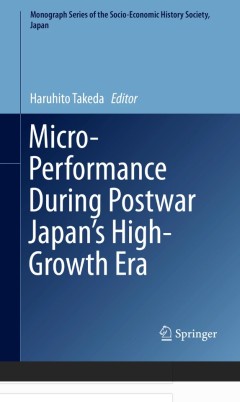
Micro-Performance During Postwar Japan’s High-Growth Era
The aim of this book is to analyze Japan's high-growth economy, in particular to clarify the kinds of changes in people’s lives that were generated by high growth. The present volume focuses not on the macro-economic mechanisms that expanded the scale of the economy, but on the micro-economic changes that were effected in everyday life. The emergence of a mass consumption society as a result …
- Edition
- 1
- ISBN/ISSN
- 978-981-10-0708-8
- Collation
- XII, 160
- Series Title
- Monograph Series of the Socio-Economic History Society, Japan
- Call Number
- -
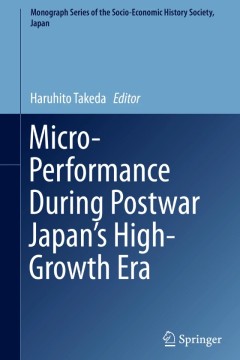
Micro-Performance During Postwar Japan’s High-Growth Era
The aim of this book is to analyze Japan's high-growth economy, in particular to clarify the kinds of changes in people’s lives that were generated by high growth. The present volume focuses not on the macro-economic mechanisms that expanded the scale of the economy, but on the micro-economic changes that were effected in everyday life. The emergence of a mass consumption society as a result …
- Edition
- 1
- ISBN/ISSN
- 978-981-10-0708-8
- Collation
- XII, 160
- Series Title
- Monograph Series of the Socio-Economic History Society, Japan
- Call Number
- -
 Computer Science, Information & General Works
Computer Science, Information & General Works  Philosophy & Psychology
Philosophy & Psychology  Religion
Religion  Social Sciences
Social Sciences  Language
Language  Pure Science
Pure Science  Applied Sciences
Applied Sciences  Art & Recreation
Art & Recreation  Literature
Literature  History & Geography
History & Geography